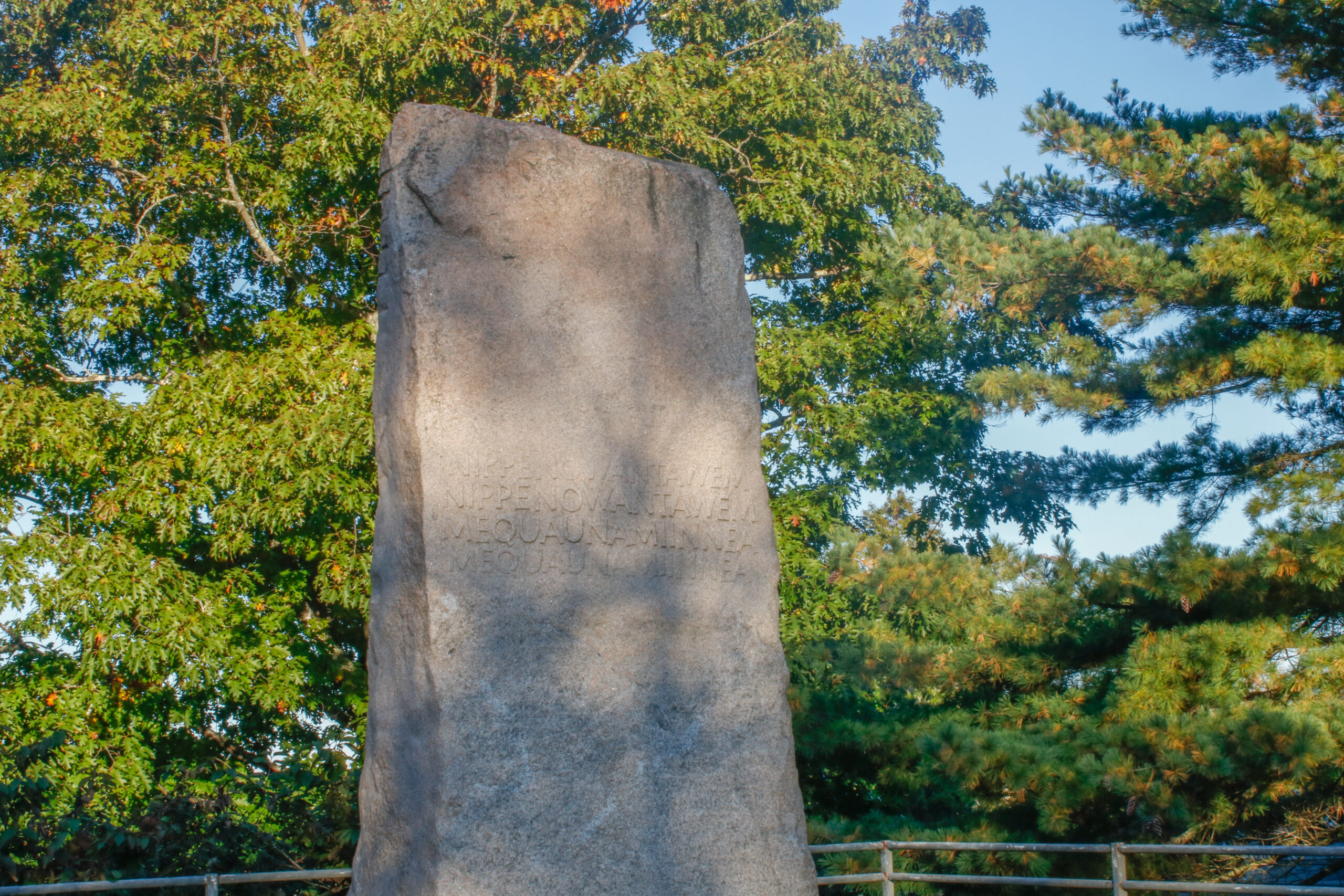University hosts panel discussion, walking tour on local history
What lies underneath URI soil, comes with surprises and new findings of the land’s long history. PHOTO CREDIT: Leah Crowley
Lorén Spears, director of the Tomaquag museum, greeted the audience that gathered in Beaupre Center for Chemical and Forensic Sciences last Saturday in her Indigenous language.
The audience was there to listen to a panel discussion entitled “Walking Through Time: The 5,000-Year History of the URI Campus.” The event, hosted by a group of professors alongside Spears, focused on the Indigenous history of the Kingston campus and included a walking tour of the campus after the panel discussion.
“The campus has lots of hidden history,” Rod Mather, a professor of history and the director of the archaeology and anthropology master’s program, said before the event. “There are lots of things that are visible, and then there are things that are nonexistent and invisible.”
In their discussion, the professors discussed the history of multiple spots on campus including the Plains Road Parking Lot, the Watson House, the Niles Family Burial Ground and the large stone monolith outside the campus library.
Kristine Bovy, the chair of the department of sociology and anthropology, talked to the audience about what archeologists found in the lower areas of campus before the building of the Plains Lot and other infrastructure. Stone tools, knives and the remnants of hearths were uncovered, among other findings.
According to the historical walk’s brochure, the archeologists “determined that the area was used by ancestral Narragansett for repeated seasonal camps, especially during the Late Archaic cultural period (5,000-3,000 years before present).”
The panel also drew attention to the Watson House, the only building on campus that predates the formation of the University. It was originally home to the Niles family, plantation owners whose African and Native slaves worked the land. Since then, the house has been used as a daycare, an all-women dorm, a tea house and a museum.
Both the Niles family and their slaves are thought to be buried just outside the Ryan Center, according to the tour. The space is acknowledged by a stone wall with a small white picket gate and a low-to-the-ground plaque.
“We were there a couple weekends ago at a football game leading a smaller tour,” Bovy said, “and you know, lots of people [are] around the Ryan Center, but I don’t think anybody really pauses to wonder, ‘why is there a plot of grass in a fenced area?’”
The plaque itself is also the subject of criticism, according to Mather, as it does not fully acknowledge the true history of the Niles family, referring to the people buried in the plot as “diverse settlers,” without any mention of slavery.
The only tribute on campus to the Narragansett tribe is the stone monolith outside the library, according to the tour. It is inscribed with the word “Nippenowantawem.” The published translation of this is, “I am of another language, I am of another language, remember me, remember me.”
“‘Remember me.’ It’s a powerful phrase,” Spears said to the audience, “but it also speaks to the memorialization and commemoration because it’s something that thousands of [students, faculty and staff] walk by every day that probably don’t even notice it. If they do notice it, they don’t know what it really is talking about or what it is reflecting on.”
More students may soon become aware of the Narragansett people’s connection to campus, as the Tomaquag Museum will be relocating to the Kingston campus. Construction on the museum is scheduled to start in 2023. Bovy said she is excited about the museum’s move.
“I think there’s going to be all sorts of possibilities in terms of raising awareness about Indigenous peoples and Narragansett traditions and cultural events with the Tomaquag Museum so close,” Bovy said. “They haven’t started building yet, but I’m already excited about how we can do things with our classes, and perhaps even get to a Native studies minor.”
The University has also turned the tour into a new course that delves into the history of the Kingston campus. It will be offered as a three-credit honors-level course next semester. Previously, the tour was turned into a virtual one-credit course beginning in the fall 2020 semester.
The professors and Spears stressed the importance of learning about Indigenous history and Spears spoke about the importance of reparations, saying that they were important to the process of healing.
“There has to be restitution and reconciliation,” Spears said. “I think in the United States, we’re not moving fast enough on that in relationship to the real genocide that took place here.”
URI is currently working with the Native American Advisory Council to establish both a Native Youth College Prep Program for high school students and a URI Narragansett Undergraduate Scholarship for Narragansett tribe members, according to a community-wide email sent by President Marc Parlange.





